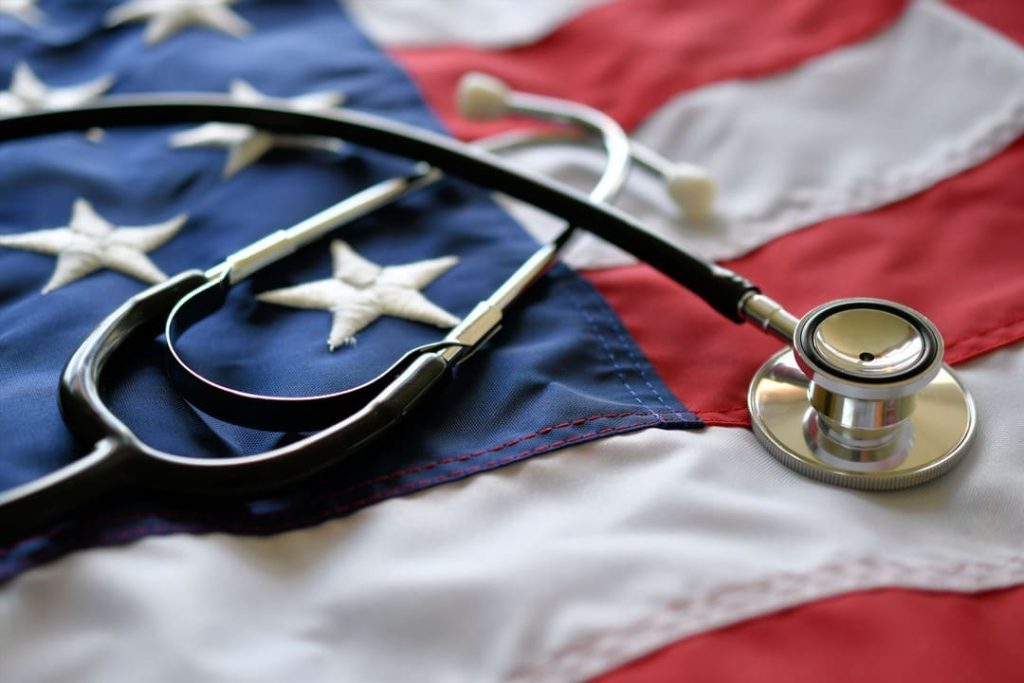Looking for Expert-Level VA Claim Answers?📱Call Us Now! 737-295-2226
When you first joined the military, you probably found yourself treading water in a sea of new acronyms: TDY, PCS, OPSEC, EPR, and so many more.
After a while, “military-ese” became second nature, and you probably found yourself confusing your non-military family and friends when you easily lapsed into your new jargon.
After you began the process of separating from the military and working with the VA, you may have felt like that basic trainee again, trying to figure out a whole new version of alphabet soup.
VA disability claims are famously difficult to navigate, but VA acronyms and terms can add yet another layer of complexity to the process.
At VA Claims Insider, we believe that educating yourself is key to increasing your VA disability rating.
You can start by learning these key terms and acronyms so you can crack the VA’s code and get the maximum benefits you’re legally entitled to.

You DESERVE a HIGHER VA rating.
Take advantage of a VA Claim Discovery Call with an experienced Team Member. Learn what you’ve been missing so you can FINALLY get the disability rating and compensation you’ve earned for your service.
27 VA Acronyms, Abbreviations, and Terms to Know
Active Duty Service: Full-time military service that qualifies a veteran to receive benefits.
Appeal: The process of requesting that the VA reconsider a previous decision about your claim.
Armed Forces: Groups of people given power to defend the U.S. The groups include the U.S. Army, Marine Corps, Navy, Air Force, Space Force, and Coast Guard.
BVA (Board of Veterans Appeals): The BVA is the section of the VA that reviews claims that have been denied by VA regional offices. The BVA will consider new evidence and seek out additional medical opinions in order to reach a decision on the appeal.
If you decide to appeal the BVA’s decision, you must do so through the Court of Appeals for Veterans’ Claims (CAVC). The next level of appeals is heard by the Court of Appeals for the Federal Court (CAFC). Beyond that is the Supreme Court. So the sequence is regional office > CAVC > CAFC > Supreme Court.
C-File (claims file): This folder is also referred to as the “VA claims folder.” The U.S. Department of Veterans Affairs keeps a C-file on all veterans who have filed disability claims. It includes all of the VA forms from the claim as well as all documentation of the VA’s decisions.
C&P Exam or VAE (Compensation and Pension Examination or Veterans Affairs exam): A C&P exam helps the VA determine if you have a service-connected disability and, if so, how to rate your disability.
Once you file your VA disability benefits claim, you may be asked to undergo a C&P exam. Also known as simply the “C&P,” this refers to an examination administered by the Veteran Benefits Administration.
Not every claim requires a C&P exam. The VA will only request a C&P if they need more information to decide on your VA disability rating. If you have enough medical evidence in your file to support your claim, a C&P may not be necessary.

CAFC (Court of Appeals for the Federal Court): This court has jurisdiction over Veterans Affairs regulations. It also rules on appeals from the CAVC. If your claim is denied by the CAFC, your only recourse is to appeal to the U.S. Supreme Court.
CAVC (U.S. Court of Appeals for Veterans’ Claims): This seven-member administrative court decides on appeals from the BVA. If your claim is denied here, you will need to report it at the next level (through the CAFC).
Claim: Also referred to as a VA disability claim, or VA claim, this is a request to receive veterans disability benefits or compensation.
In order to receive these benefits, you must:
1) Have a current condition (illness or injury) that affects your mind and body
2 Have served on active duty, active duty for training, or inactive duty training
You must also show that:
1) You got sick or injured while serving in the military OR
2) You had an illness or injury before you joined the military, and your service worsened it OR
3) You have an illness or injury related to your active-duty military service that did not manifest until after you terminated your service
And finally, you must show that:
1) There is a link between your military service and your disability as verified by competent medical evidence or a nexus letter from a physician
CUE (clear and unmistakable error) or CUE Claim: This is grounds for appealing a claim based on the VA making a clear and unmistakable error when reviewing your claim. You must prove that the adjudicator overlooked the correct facts as they were at the time and that the error changed the outcome of the review.
DBQ (disability benefits questionnaire): A DBQ is a form used to evaluate a veteran’s disability claim. A DBQ can be completed by a VA physician or a private physician.
DC (Diagnostic code): This is a four-digit code that is assigned to different conditions based on the VA’s rating schedule. Each diagnostic code correlates with a range of percentages that are used to rate the severity of a veteran’s disability.
For example, if you have a duodenal ulcer in your digestive tract, you would be assigned diagnostic code 7305, which can be rated as 60%, 40%, 20%, or 10%.
DIC (dependency and indemnity compensation): When a veteran dies due to a service-connected condition, this tax-free monthly benefit is awarded to his or her surviving spouse or dependent child.
DRO (decision review officer): If your claim is denied and you file an appeal, your claim will be reviewed anew by a senior technical expert known as a DRO. The DRO can consider new evidence and is charged with making a decision with fresh eyes and without deference to the previous decision.
Discharge: A discharge releases a member of the armed forces from their obligation to serve.
The classification of a veteran’s discharge is significant because VA benefits are only available to veterans who were discharged “under conditions other than dishonorable.”
The five discharge classifications are:
- Honorable discharge (HD)
- Discharge under honorable conditions (UHC) or general discharge (GD)
- Discharge under other than honorable conditions (OTH) or undesirable discharge (UD)
- Bad conduct discharge (BCD)
- Dishonorable discharge (DD) or dismissal

ED (effective date): This is the date on which the VA begins granting, increasing, reducing, suspending, or terminating benefits. To determine this date, the VA will consider 1) the date the claim was received and 2) the date you became entitled to the benefit. They will usually choose the latter of these two dates as the ED.
IME (independent medical exam): These medical exams are not provided by the VA. Instead, they are performed by an independent physician or psychologist who is not affiliated with the VA. These exams provide expert opinions on the severity of your disabling condition and whether or not it is service-connected. They can provide “new and material evidence” to support a claim or refute an unfavorable report from a VA physician. In most cases, the veteran (not the VA) will be responsible for paying for the IME.
IR (increased rating): A veteran can file an IR claim to try to increase their VA disability rating for a service-connected disability.
IU (individual unemployability): This is sometimes known as the “back door to 100% disabled veteran benefits.” Even if the VA does not grant you 100% VA disability, you can still receive 100% VA disability pay if you can show “individual unemployability.” This means that your service-connected disability keeps you from holding “substantially gainful employment” that supports your financial needs.
NOD (notice of disagreement): If the VA regional office makes a determination on your claim that you disagree with, you may submit an NOD within one year of the decision date. A NOD is a written statement expressing your disagreement with the decision and your desire to appeal.
Nexus Letter: A Nexus Letter is a detailed medical report created by a non-VA doctor linking your disability/condition to your military service. If your disability was not diagnosed during your military service (or if you do not have documentation in your military records about the symptoms of your condition), a nexus letter can provide the medical evidence you need to establish a service connection for your disability.
RO/VARO (Regional Office or VA Regional Office): This refers to the local-level VA offices where disability claims originate. To start the VA disability process, you should find the closest RO.
Service-Connected Disability: This distinction is assigned to a veteran’s disability that either started or worsened during active duty military service. There is also a distinction known as “secondary service-connected disability.” This describes a disability that did not develop during military service but was caused or worsened by a primary service-connected disability. Even if a veteran is not awarded 100 percent VA disability due to their service-connected disability, they may reach this threshold through ratings for their secondary disabilities.
VAE (VA exam): Same as the C&P exam described above.
VBA (Veterans Benefits Administration): This is the component of the VA that administers financial assistance and other benefits to veterans, veterans’ dependents, and veterans’ survivors. These benefits include:
- Disability compensation
- Pensions
- Survivor’s benefits
- Rehabilitation and employment help
- Education assistance
- Home loan guarantees
- Life insurance
VHA (Veterans Health Administration): This is also a division of the VA, but it does not administer veterans’ benefits. Rather, it provides healthcare to millions of veterans enrolled in VA healthcare.
Veteran: An individual who served in the active military, naval, or air service and who was discharged or released under conditions other than dishonorable.
The more familiar you are with VA abbreviations and VA acronyms, the better prepared you will be to apply for VA disability benefits and get the compensation and services that you’re entitled to. And if you need more information and guidance to help you file a VA disability claim, contact VA Claims Insider.

NEED MORE ASSISTANCE?
Most veterans are underrated for their disabilities and, therefore, not getting their due compensation. At VA Claims Insider, we educate and support you to understand and take control of the claims process, so you can get the rating and compensation you’re owed by law.
Our process takes the guesswork out of filing a VA disability claim and supports you every step of the way in building a fully-developed claim (FDC)—so you can increase your rating FAST! If you’ve filed your VA disability claim and have been denied or have received a low rating—or you’re unsure how to get started—reach out to us! Take advantage of a FREE VA Claim Discovery Call. Learn what you’ve been missing—so you can FINALLY get the disability rating and compensation YOU DESERVE!
Video




